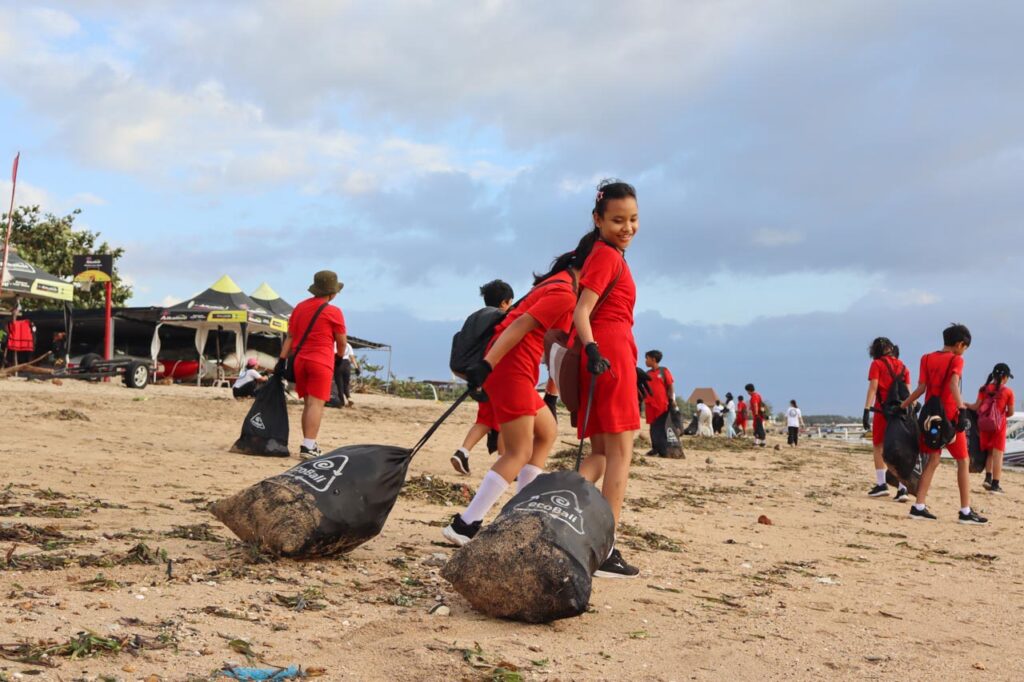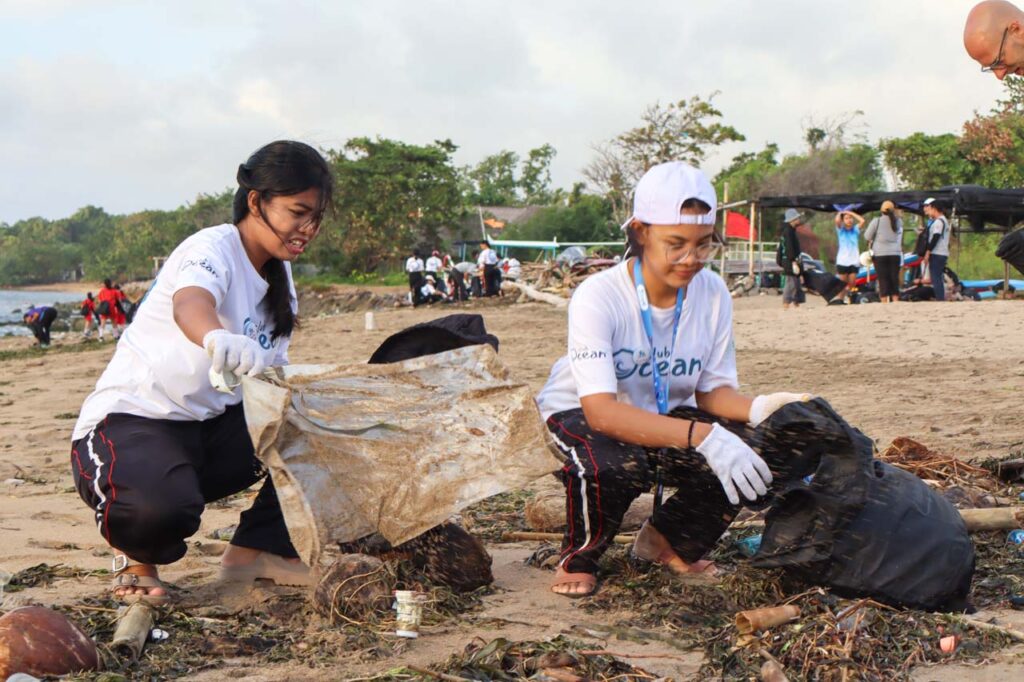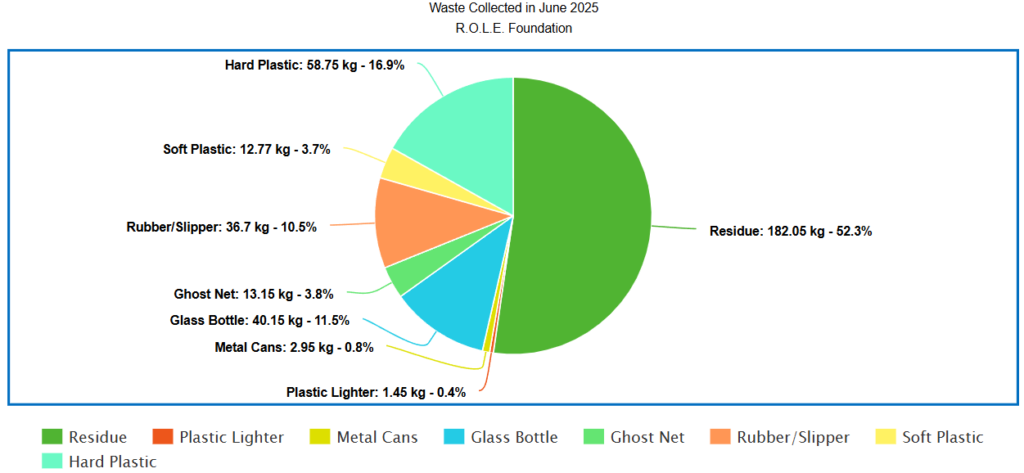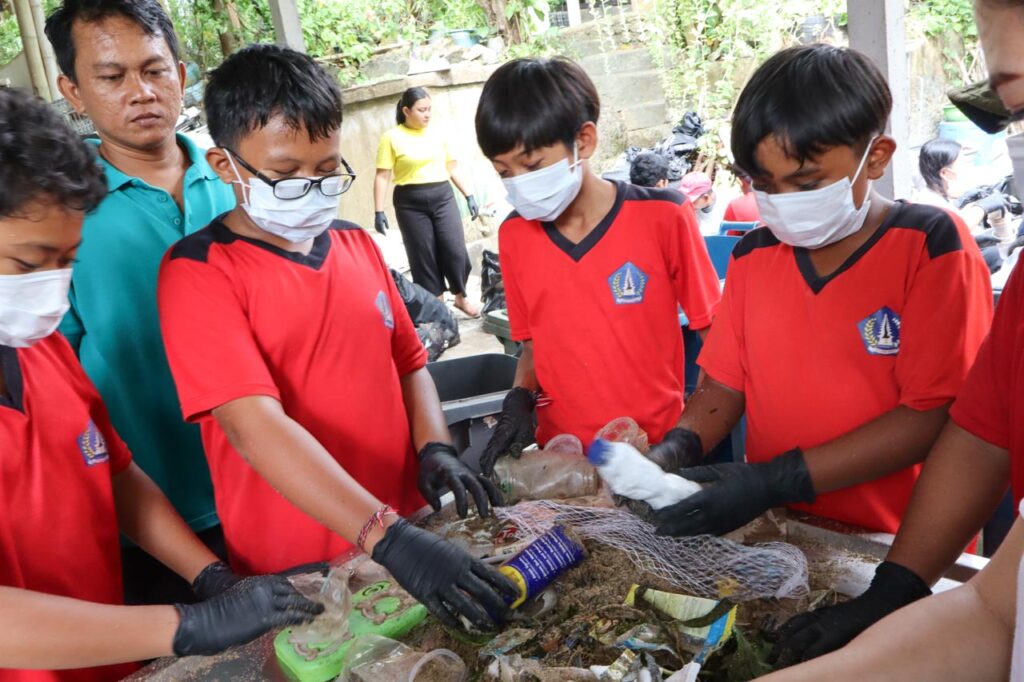On 13 June 2025, the R.O.L.E. Foundation, together with Club Ocean, carried out a beach cleanup at Tanjung Benoa Beach, involving 60 participants, including students and teachers from SD 2 Tanjung Benoa, as well as staff, volunteers, and Bali WISE students from the R.O.L.E. Foundation. This event aimed to raise awareness about the impact of waste on coastal areas and provided students with direct experience in environmental action. As part of the program, the students actively took part in waste separation, gaining practical knowledge about the different types of waste commonly found on the beach. The total amount of waste collected was 347.97 kilograms, a striking figure that reflects the current environmental pressure on this area.

The students learned a great deal from the event — not only about the types of waste polluting their beach but also the harmful effects it has on the environment. They realized that waste, especially non-organic and unrecyclable materials, can significantly damage marine ecosystems. They also observed firsthand how much effort it takes to manage and separate waste properly, reinforcing the importance of reducing waste at the source and keeping the environment clean.
Location and Condition of the Beach

Tanjung Benoa Beach is a well-known destination in Bali, especially for its water sport activities that attract both local and international visitors. The beach’s popularity, however, also brings with it a substantial increase in pollution. On the day of the cleanup, the beach was experiencing low tide and strong winds, which made the presence of scattered waste more visible. The beach’s condition before the cleanup was visibly littered, and the change afterward was clear and impactful.
Waste Collection and Separation

In total, 347.97 kilograms of non-organic waste was gathered during the cleanup. Approximately 52% of the waste was classified as residue, which is not suitable for processing and will be directed to landfill. Other significant waste types included plastic cups (14.15 kg), glass bottles (40.15 kg), and styrofoam (18 kg). The high volume of styrofoam, in particular, is a clear indicator of the heavy tourism activity in the area and may also suggest that some of it entered the ocean from the many day-trip boats operating nearby. While hard plastics and other materials such as plastic wrappers, cups, and sandals were also present, the participation of the students in the separation process allowed them to better understand which materials can be recycled and which must be disposed of responsibly. This hands-on approach enhanced their learning and environmental awareness.
Play a ROLE!
You can support our next beach cleanup and be part of the waste solution in Bali! Reach out to us now via email to capbuild@rolefoundation.org or WhatsApp at +62 812-4686-3648!



Recent Comments